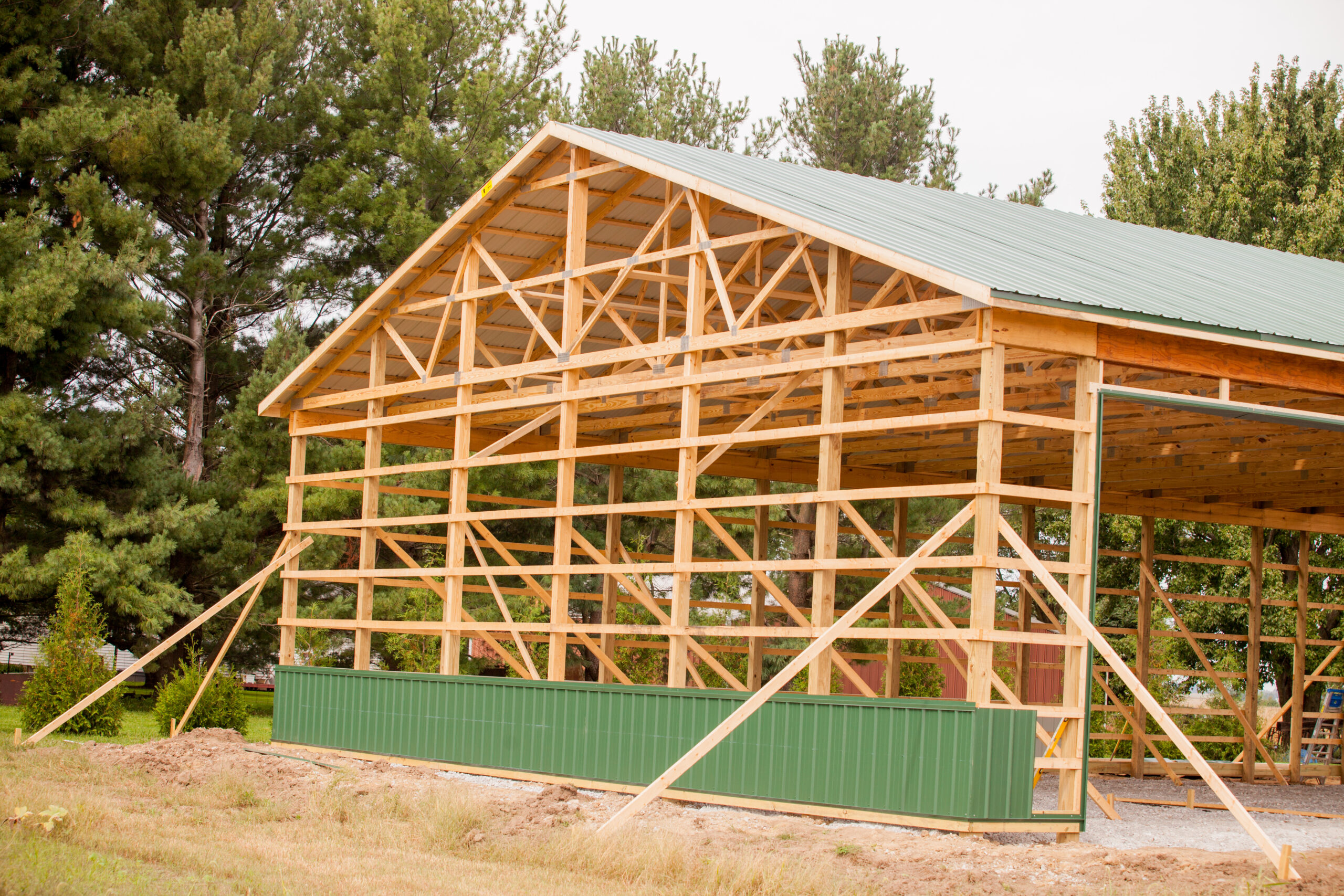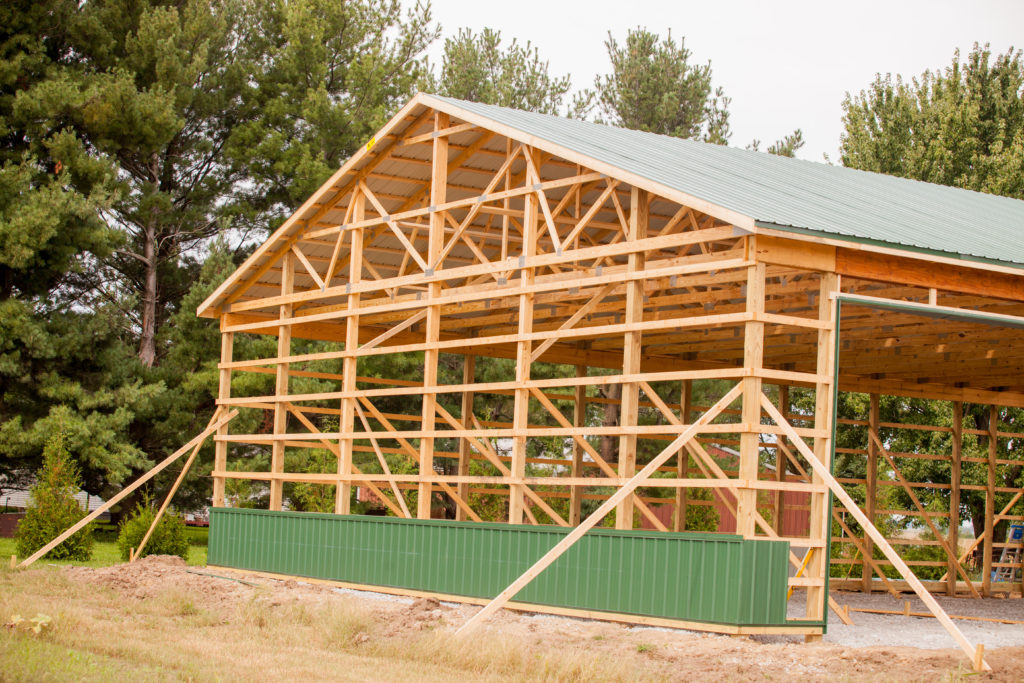
There are many different terms when it comes to building. Here is the breakdown of the basic terms you will hear when looking into building a pole barn.
Grade
The technical definition for grade is “ the line intersection between the building exterior and the finished ground surface.” To put it simply, grade is where the ground meets the building.
On Center (O.C)
On Center is how far apart the lumber is spaced. For example, we space the posts 8 feet from the middle of one post to the middle of the next post.
Gable
Gable is the sides of building where you can see the peak of the roofline going upwards.
Eave
Eave is the sides where gutters are installed for water run-off, where you would install gutters.
Trusses
Trusses are the support system of of the roof and provide the interior ceiling. They are customized to support your pole barn. The centers come in 2, 4, or 8 ft, depending on the ceiling load. Trusses come in many shapes, but mainly these two:
Standard – has a flat bottom which allows for a flat ceiling
Scissor- crossed beams provide a vaulted ceiling. This gives you more head room or space for a loft if extra height is needed.
Overhang
This is how much roof is hanging past the walls on the ends and sides of the building. Overhang will typically be 12 to 24 inches.
Purlins
Purlins are the pieces of lumber on the roof that provide structure and where the metal panels are attached.
Girts
The girts are similar to the purlins in that they are 2x4s placed 24 inches on center, but on the walls instead of the roof. Girts also provide wall support.
Girder
The top support pieces are known as girders. Beam sizes will typically be 2×10 or 2×12.
Bottom Wall Girt- Skirt Board- Splash Board-Grade Board
There are several different names for the piece that sits on ground level. It is treated wood because it is in contact with the ground.
Header
This is the support opening for a door, and for larger openings is typically a LVL beam (Laminated Veneer Lumber) as that provides the added strength needed for large openings, especially on the eave walls where support is needed.
………………………………Part 2 to follow……………………………….
If you want to see the visuals for all these terms, go check out the full video on our Youtube channel!
Link here: https://www.youtube.com/watch?v=S9Yvwe3QWlo&t=28s
